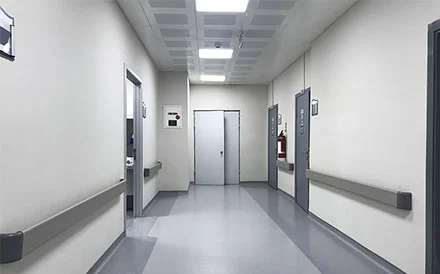In today's world, where the threat of infectious diseases looms large, the need for effective sanitization has never been more crucial. The unfortunate reality is that harmful pathogens can be found in every nook and cranny, posing a serious threat to our health and wellbeing. Thankfully, advancements in technology have paved the way for the development of medical sanitizing machines, which can play a pivotal role in combating this microbe menace.
Medical sanitizing machines are specifically designed to eliminate harmful microorganisms from medical equipment, surfaces, and even the air. These innovative devices utilize various methods such as ultraviolet (UV) light, ozone, or chemical disinfectants to achieve thorough sanitization. By implementing these machines in healthcare settings, we can significantly reduce the risk of healthcare-associated infections and ensure a sterile environment for both patients and healthcare workers.
One of the primary advantages of medical sanitizing machine is their ability to provide consistent and reliable results. Unlike manual cleaning methods, which can be prone to human error and inconsistencies, these machines are engineered to follow standardized protocols, leaving no room for oversight. This ensures that every surface and piece of equipment is subjected to the same rigorous sanitization process, thereby minimizing the chances of any pathogens escaping undetected.
Furthermore, medical sanitizing machines offer a time-efficient solution to the ever-increasing demands of healthcare facilities. With the ability to sanitize multiple items simultaneously, these machines can greatly expedite the sanitization process, enabling healthcare providers to attend to more patients effectively. This not only enhances the overall productivity of healthcare facilities but also reduces waiting times and improves patient satisfaction.
Moreover, cleaning and disinfecting medical equipment provides a cost-effective solution for healthcare institutions. While the initial investment in the machine itself may seem significant, the long-term benefits far outweigh the costs. By preventing infections and subsequent complications, these machines can potentially save healthcare facilities substantial amounts of money that would have otherwise been spent on additional treatments, prolonged hospital stays, or legal liabilities.
It is also crucial to note that medical sanitizing machines are not limited to healthcare settings alone. The ongoing COVID-19 pandemic has highlighted the importance of sanitization in various sectors, including educational institutions, hospitality, transportation, and more. Implementing medical sanitizing machines in these areas can help curb the spread of infectious diseases and restore a sense of safety and confidence in our daily lives.
In conclusion, in the constant battle against harmful pathogens, medical sanitizing machines have emerged as a vital weapon. With their consistent and reliable sanitization capabilities, these devices offer a solution to the microbe menace that plagues our society. From healthcare facilities to public spaces, medical sanitizing machines are paving the way for a cleaner, safer future. It is imperative for organizations and individuals to embrace this technology and prioritize sanitization to protect our health and wellbeing.

Hey, I’m Frank from Meddo Medical.
With over 15 years of experience in medical devices and healthcare innovation, I specialize in providing OEM & ODM solutions for hospitals and clinics worldwide.
My goal is to share professional knowledge and industry insights to help healthcare providers choose reliable, high-performance medical equipment that improves patient outcomes.
 English
English français
français Español
Español العربية
العربية



